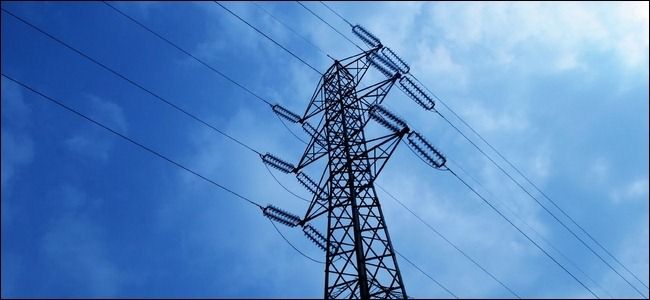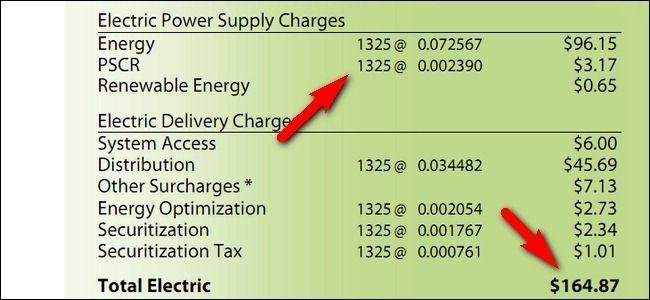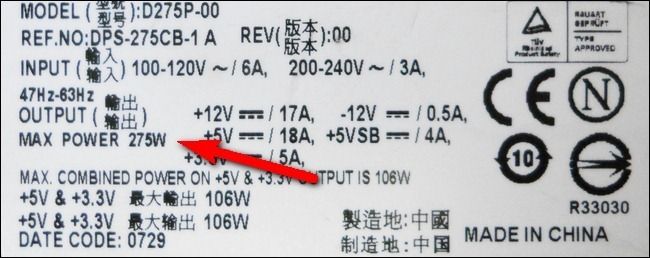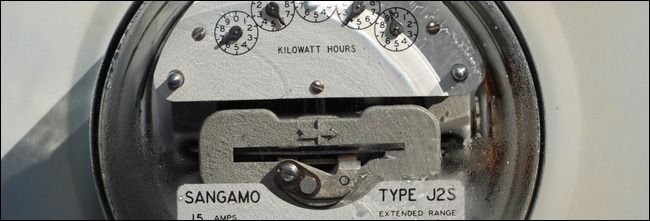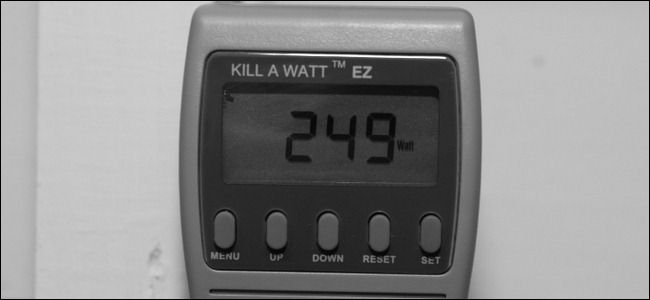How much energy does your computer use? Your media center? Your charging station? If you have no idea, you’re not alone. Read on as we show you how you can easily measure the amount of energy your appliances-geeky and otherwise—are sucking down.
There are a variety of reasons for wanting to figure out how much energy your gadgets, gizmos, and appliances are sucking down, ranging from environmental concerns to shock over a high electric bill. Today we’re going to take a look at the different ways you can measure your energy usage. These methods fall on a wide spectrum of free-as-in-beer to costs-a-few-bucks and accurate-to-a-decimal and good-enough-estimates. Although by the end of the guide you’ll see we have a clear favorite, in the interest of informing you (and enabling you if you absolutely must do it in a free-as-in-beer way) we’re going to cover several techniques.
Getting Started
Each method requires a separate set of tools, so we’re going to forgo our usual “What You’ll Need” section and encourage you to read through the the entire guide to decide which method will work best for your needs.
Before we proceed, however, there is one critical thing you’ll need for every technique. You’ll need to know how much your utility company is charging your for electricity. Pull out last month’s bill or login to the utility company’s web site to find out how much they are charging you per Kilowatt Hour (kWh)
When you look at your bill, you’ll likely see all sorts of confusing stuff. Surcharges for this, for that, and the other thing. Federal and state taxes, all itemized and tacked on. What ultimately matters is how many kWh you’re using and what you’re ultimately paying after Uncle Sam, Statesman Steve, and the Android Council all get their micro-slice. In the sample bill above 1325 kWh were consumed in the month and the total bill for electrical usage was $164.87. If we divide the bill by the consumption:
Total Electrical Cost / Total Electrical Consumption = Cost Per Unit
We get:
$164.87 / 1325 kWh = $0.12443 per kWh
Since we like to err on the side of caution when it comes to estimating our expenses, we’re going to round that number of to $0.125 or 12.5 cents per kWh for the calculations in this tutorial. For most accurate results, make sure to get a recent bill and calculate your own energy cost. Have your calculated cost in hand? Great! Let’s move on to figuring out your costs.
Estimating Your Expense Using The Manufacturer’s Label
This is the least accurate way of measuring a given device’s electrical usage, but it is free and will give you a very—very—rough estimate. Every device you own, whether it is printed on the device itself or the transformer (wall wart) that powers the device, should have a label indicating the power consumption. Our office espresso machine, for example, has a plate on the back of it that indicates the machine consumes 1200 watts. One of the office computers has a plate on the back of the power supply that says 400 watts. It would seem like a pretty simple calculation to get from the energy use of the item to the cost of running it, right?
The calculation for converting watts to kilowatt hours is such:
Watts * Time Used / 1000 = kWh
Using that calculation we can take the 400 watts from our computer, multiply it by 12 (the number of hours we leave it on a day) and then divide by a thousand to get the kWh. This yields 4.8 kWh, which at our previously stated utility cost, means it costs us 60 cents a day (4.8 kWh * 12.5 cents).
How easy was that! Aside from the hassle of punching the calculator for a half minute or so, no sweat right? The only problem is that it’s wildly inaccurate as very few appliances draw their maximum Watt rating. The power supply on the computer says 400 watts, but that’s a maximum rating. In reality it runs at a much lower wattage 100 percent of the time (if your computer was routinely hitting or exceeding the wattage rating for the power supply, you’d be having all sorts of problems). It’s a safe bet that the computer is using as little as half of the rated amount.
The same thing goes for the espresso machine. The plate says 1200 watt but outside of the first few minutes of the day when it is warming up the cold boiler, it never even comes close to that level of power consumption. The further compound the problem, many smaller appliances, especially those with wall transformers, list the power in amps. You have to go through a totally new set of calculations to get from amps to watts—and you still won’t have an accurate number.
We simply cannot accurately calculate the real world energy costs based on the manufacturer’s label. We can ball park it, we can decide if a particular device is too power hungry for our needs (or will have a peak draw too high for the circuit it shares with other devices) but we can’t reliably calculate the real world cost. It’s good to know how the calculations work but pretty useless for actually figuring out how much the device costs you in real world usage.
Using Your Electrical Meter to Measure Electrical Usage
Unlike guesstimating based on a label, this method actually starts—sort of—moving us in the direction of accurate measurement. Your home or apartment has an electrical meter that the utility company uses to bill you. You can observe this meter in order to figure out how much energy a device is sucking down. The gist of it is that you go outside and stare at the meter, watching it for a set amount of time, and then use the new reading to calculate how much energy the item in question is using.
There are a few problems with this method. First, it’s very difficult to isolate a single device, like a computer, because of the hassle of trying to disconnect everything from the wall. If you forget to unplug your fridge, for example, and the compressor kicks on while you’re standing outside staring at the meter, the reading you’re trying to get for your computer can easily be off by several hundred watts. Since no reasonable person would stand there watching the meter for a lengthy amount of time, the error would go undetected. That said, it’s marginally more accurate than guesstimating based on the appliance label if you’re measuring a device that is on and draws a steady amount of power. It’s totally useless of measuring small volumes of electricity (like the draw from a charging laptop) and equally as useless for something like the aforementioned espresso machine that idles for most of the day only drawing power to keep the boiler up to operating temperature.
Potential drawbacks aside, how can you actually use this technique? You’ll need a stop watch, a calculator, and some free time. First, go through your house or apartment and unplug everything. While little things such as your iPad charging won’t swing the reading much, leaving the AC on and the fridge plugged in will. The only thing that you should leave plugged in is the device you want to measure, like your computer.
Head outside with your stop watch and find the meter. If you have an analog meter you’ll see a metal disk spinning behind the glass front. If you have a digital meter there will not be a disk; you will instead see some sort of digital indictor blinking. That blink is known as a “beat”. Look at the front of the meter for a number notated with “kH”. The two most common numbers are 1.0kH and 7.2kH—if yours is different that’s fine. Write this number down.
If you have an analog meter, you need to watch the metal disk. The disk should have some sort of mark on it to indicate a start point in the circle. Wait for that mark to pass the indicator arrow on the meter face. When it hits that arrow, start the stop watch and wait for it to rotate all the way around. When the disk mark returns to the arrow, indicating one full revolution, stop the stop watch. This is the formula for calculating the power draw based on the spinning of the analog disk:
(3600 / number of seconds) * kH # = watts consumed
Let’s say that we watched our meter and the disk took 15 seconds to spin one full revolution. Additionally, the kH notation on the meter face was 7.2. We plug the numbers in like so:
(3600 / 15) * 7.2 = 1728 watts
That’s the real world consumption of that device at that very moment. By taking that number and plugging back into the formula from earlier in this guide (the conversion of watts to killowatt hours) we can calculate that the device we were measuring will consume 1.728 kilowatts per hour if it maintains that level of power draw and will cost us 21.6 cents per hour to operate.
To calculate the energy use on a digital meter, we use a similar counting technique and formula. If you have a digtal meter, go outside with the stop watch and get ready to count. Start your stop watch and begin counting the number of beats. Continue this for as long as you can stand it. Plug the numbers into this formula:
(3600 * beats) / seconds * kH # = watts consumed
The longer you can stand to count the more accurate the reading will be.
While measuring at the meter is more accurate than reading the label and running a guesstimate calculation, it still only shows us the power consumption at that exact second in time (albeit more accurately if you have a digital meter and a high tolerance for standing at the side of your house counting to yourself). Better than practically guessing but still quite prone to error as its difficult to isolate a single item in the house and impractical to measure it multiple times to get an average rate of consumption.
Using a Device Meter to Measure Individual Consumption
If guessing off the label is wildly inaccurate and standing outside at your meter is only marginally more accurate (and infinitely more tedious) then where does that leave us? What we need is a simple and cheap way to measure device consumption between the device and the outlet. Enter the simple plug-in watt-hour meter!
A watt-hour meter is a simple device you plug in between an appliance and the wall that measures the energy consumption on the fly. Even better, it will perform the calculations for you. The best known watt-hour meter on the market is the P3 Kill-A-Watt electricity monitor. There are multiple versions, but by far the best value is the Kill-A-Watt 4460 which retails for around $28. The $20 P4400 lacks an internal battery to retain settings during movement or power outages and the P4488 ($40) is bulkier and offers a built-in timer of dubious utility.
For our tests we used the Kill-A-Watt 4460 and were extremely pleased with the ease of use and accuracy of the device. Using the device is simple. First, pllug it into the outlet you normally use for the device. In our case we we were rather interested in seeing how much power the office server uses. Once the P3 and the device are plugged in, hold down the RESET key until the display flashes. Then hold down the SET key until the kWh rate is displayed and begins flashing. Use the up/down keys to adjust the amount in the rate box until it matches your current utility rate (in our case we adjusted the default of $0.250 down to $0.125). Press the SET key again to save the rate.
From there you can can press the MENU button to toggle through the various displays (such as the line voltage, current, watts, line frequency, and cost). When you read the cost menu, use the Up/Down arrows to toggle between Hour, Day, Week, Month, and Yearly cost. The longer you leave the device plugged into the Kill-A-Watt the more accurate reading you’ll get (although after a few days of regular use there is certainly a diminishing return on increased accuracy).
For example, when we first plugged in the server the readings for the first few minutes indicated that our cost to run it 24/7 was roughly $20 a month. The initial startup of the machine sucked down a higher than usual amount of power, however, and after we left the Kill-A-Watt for a few hours it dropped to $17, and after a day it dropped to $15 per month, reflecting a better averages per-hour cost.
The averaging and auto-calculation is the best feature of the Kill-A-Watt. Curious how much energy that espresso machine costs a month? Go ahead and measure it for a week. The Kill-A-Watt will track the ups and downs and give you the average energy use over everything from an hour to a year. When you’re satisfied with the measurement, just unplug the device, locate it near the new appliance you want to measure, press the RESET button, and start measuring the power consumption of the new appliance. It’s that easy.
As you can see, while the manual calculations we outlined early in the guide are great for practicing your math skills and getting a better look at your power meter, clearly investing the $28 in the Kill-A-Watt will save you an enormous amount of time and give you the most accurate measurements.

